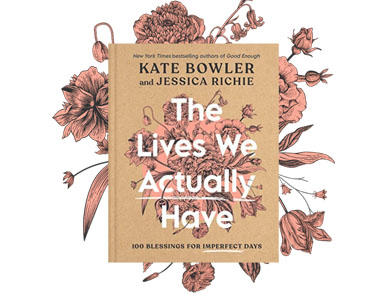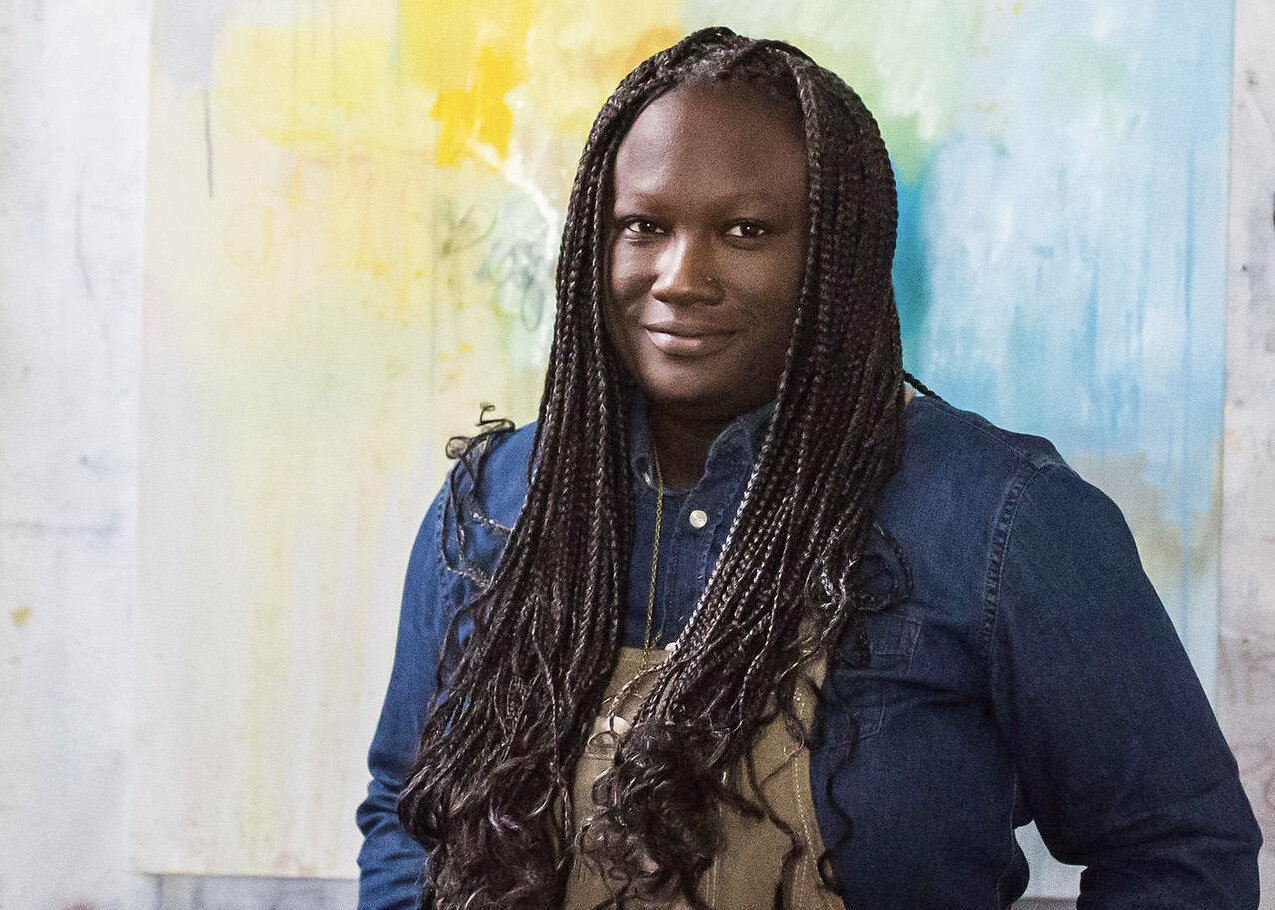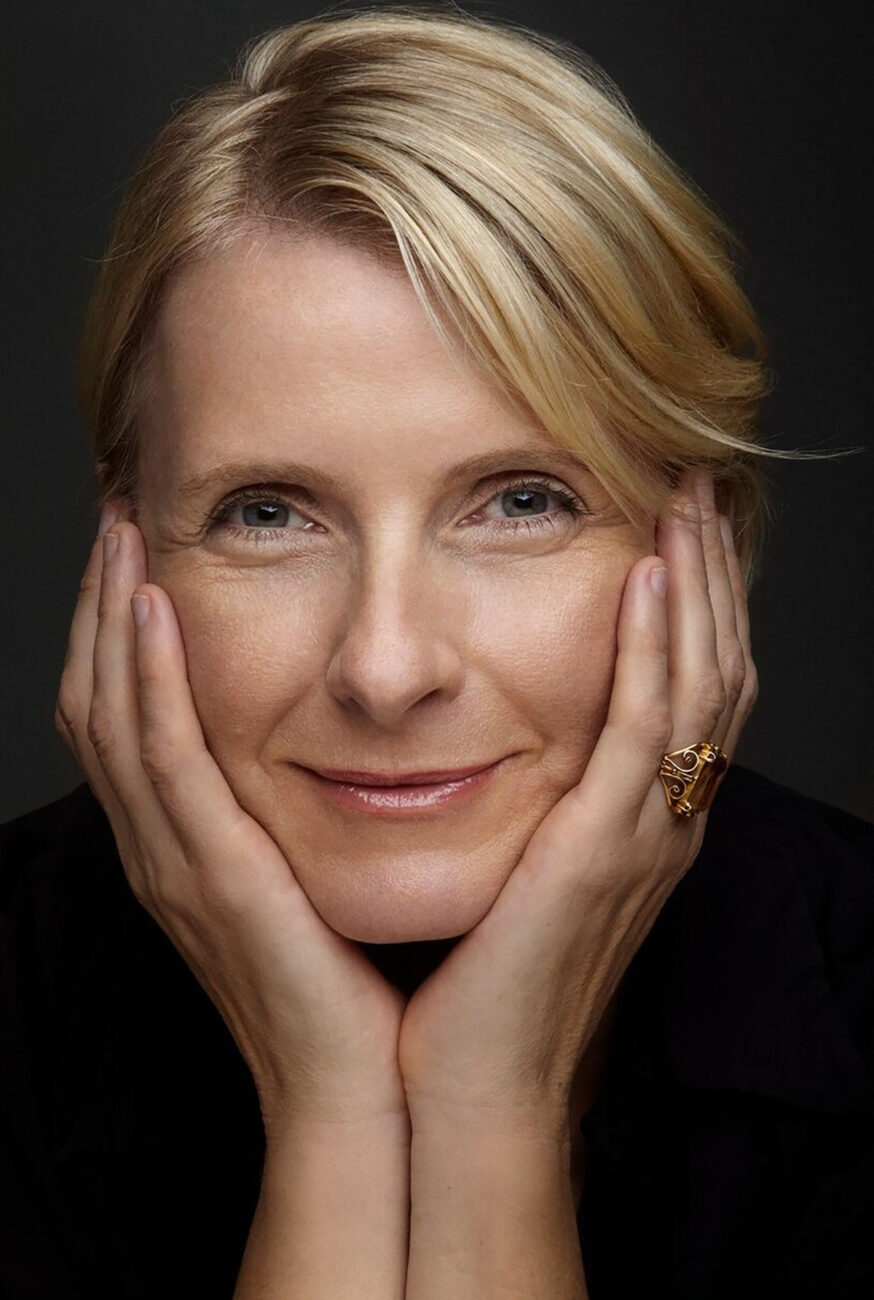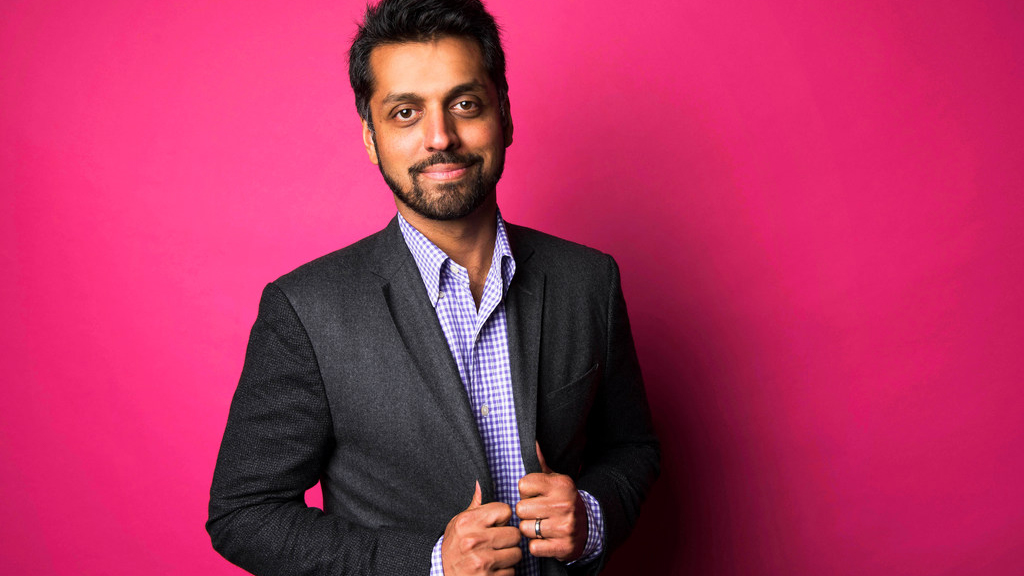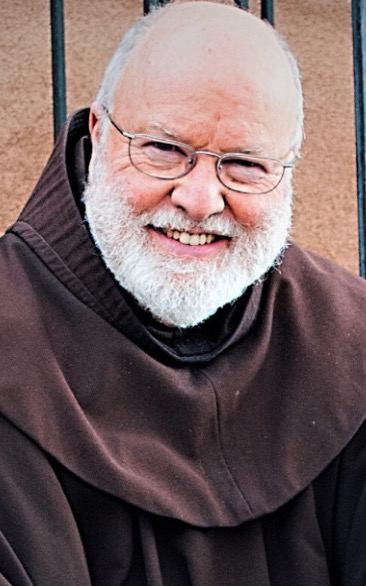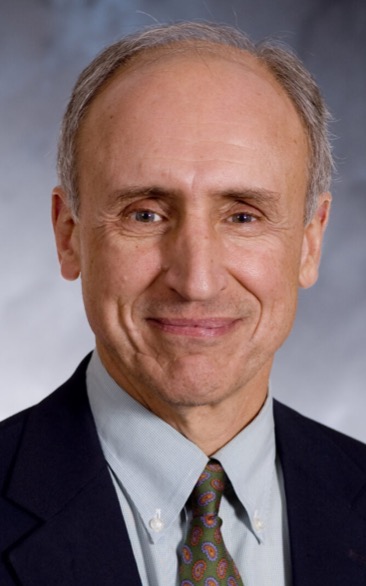Kate Bowler: Hi, I’m Kate Bowler, and this is Everything Happens. Look, the world loves us when we are good, better, best. But this is a podcast for when you want to stop feeling guilty that you’re not living your best life now. We’re not always living the plotline of the Bachelorette. I used to have my own delusion of living my best life now. I’m a Duke professor, wine and cheese enthusiast, wife and mom. Instagram gold. Then I was diagnosed with stage four cancer. That was four years ago and I’m still here. And now I get it. Life is a chronic condition. The self-help and wellness industry will try to tell you that you can always fix your life. Eat this and you won’t get sick. Lose this weight and you’ll never be lonely. Believe with your whole heart and God will provide. Keep this attitude and the money is yours. But I’m here to look into your gorgeous eyes and say, hey, there are some things you can fix and some things you can’t. And it’s OK that life isn’t always better. We can find beauty and meaning and truth, but there’s no cure to being human. So let’s be friends on that journey. Let’s be human together.
Kate Bowler: There are some experiences that can’t be pinned down or adequately described. Falling in love. The loss of your child. The death of a dream. They can only be captured sideways. Through song or poetry or art or dance. They can only be captured in the making. Artists lean into these liminal spaces and do the work that art demands, that you turn yourself inside out to make something ethereal. Today, I want to talk to one of my favorite artists who leans into the mystery and uncovers something really beautiful. Lanecia Rouse Tinsley is an abstract artist based in Houston, Texas, whose work includes photography, painting, teaching, writing and speaking. She received her master’s in divinity from Duke Divinity School and served local churches in South Carolina, England and Tennessee before becoming the owner and creator of LARArt Studio. Lanecia, thank you so much for being with me.
Lanecia Rouse Tinsley: It’s good to be with you.
K.B.: We both know that podcasts are a notoriously visual medium. So I’m holding up one of your pieces right now. Just joking. I wish I was. But would you mind for listeners describing for a moment, like the kind of art you create?
L.R.T: Sure. So I would say I create definitely abstract mixed media work. I really seek to put as much texture and layer and color in my work as possible to make visible the things that are invisible within me so really emotive, textured, color carries all kinds of meaning, all of my work is this exploration or sitting with the question of what does it mean to be human? To fully be human in this world that we inhabit and freely allow myself the freedom to explore that through color and textures and the canvas rather than words.
K.B.: I think abstract art, right? By its nature, leaves a little room for some mystery, like how have you thought about the role of, like, mystery in your art.
L.R.: Thank you for seeing that in my work, because I do hope that my work does kind of invite people into, into space of like contemplation and of wonder and engagement with the mystery and which holds for me all the things of like uncertainty and a space where curiosity to really flourish. That awkward, kind of uncomfortable space for us, even of like, not knowing and being really ok with that. And just allowing the work to be and do a work in us or in the world. That’s my hope as the world does that with me, too. And, you know, and in that in the process of even making that kind of work, I’m often surprised. Of what I’m capable of doing, but also the material itself as you work. And I learn so much about myself as an artist about my material and practice through just this engagement of allowing things to become and not forcing and just of wondering, curiosity and play in the work. And so I hope I hope the viewer is able to kind of enter into that space with me when they engage my work.
K.B.: When I first started making, like, creative writing, that wasn’t just my academic work, it was my first time sort of like not knowing when you’re making something where it’ll go exactly, because I write history. And so I typically sort of know where it’s going to go because I already decided, it already happened.
L.R.: Yeah.
K.B.: When I started like the creative writing process, at first it was hard to be honest because I wasn’t used to it. But then I kind of got hooked on being honest, like it allowed me to get to a place emotionally and intellectually and maybe spiritually that I hadn’t been able to do when I had like the tight parameters. And I know you and I have both kind of gotten at some of our experiences of grief, almost like sideways that way. I don’t know how else to put it, also you can’t see my hand gestures, but I’m doing like a sideways hand.
L.R.: I’m moving mine, too. Yes. No, all of that and I do, I think for so much of my life, I feel like I had to, I was taught really early in unlearning this idea of like, think your way through pain. Right. Like, think your way and not feel your way through it. Thought for every plan. And this idea that there’s like a plan for everything, and if you do this then A plus B equals you know whatever, will lead to C. But what I found was that, like, there’s just so much where it’s life and we live it and we don’t know or have control over fully at all. Like what the next thing will be. It’s just this idea of being present to the now and that now is a part of this just huge mysterious hole that I can’t quite wrap my mind around.
K.B.: Yeah, like, it opened a door and then there was a lot there it sounds like. There’s like hunger and creation and joy and memory. And man, once you open that door to honesty, like a lot of stuff comes through.
L.R.: Yeah, I remember, I’m a part of a church community here and a partnership on the Holy Family. And they commissioned me to do these large six feet by six feet paintings.
K.B.: Oh my gosh, wait, how tall are you? Was that a like, were you on a ladder the whole time? What’s going on?
L.R.: No, my body was doing a serious workout. I was flipping paintings and doing all the jazz and stretching. But I think up until that point maybe the largest painting I’d done was like a two feet by three feet kind of deal. But when I was asked, I said yeah, I can do that, you know.
K.B.: Sure.
L.R.: The canvases arrive, they were in my studio. And they sat in my studio unopened, untouched for about two weeks. And I went back to the art store and the manager asked me, like, how are those big ones coming? And I said, they are the masterpiece of minimalism.
K.B.: I tried to say less with more.
L.R.: And so we were just sitting there like laughing. And he was like, you know, just paint real big. Go get, go to Home Depot, get that big paint brush, paint big. Put it all on there. You know, he talked some technical things with me and he was like, and just remember, the canvas is big enough to hold all of your energy and all of your truth. So just let it out.
K.B.: I like that.
L.R.: Right? I was like, oh, yeah.
K.B.: Bigger box. I like that.
L.R.: Yeah, even though I may articulate these Advent, you know, these seasons of a calendar that for so long my faith had been so like boxed, that the new season was the spaces like liberating and breaking out those boxes and deconstructing some things and reconstructing something I could hold on to and that could hold on to me. And so it just was so funny, he didn’t even know it, like right, we still talk about all of these things and honesty and truth and the canvas can hold it.
K.B.: You know, I heard older women say that that gets easier with age. Right, that maybe at some point you’re just like, I’m going to need, that’s sort of like I’m going to need a bigger boat, but I’m going to need a bigger box. Like, I’m goint to need a bigger canvas for, like, what I’m living and what I’m realizing but that kind of permission, that doesn’t come easily to me. It sounds like that was really liberating.
L.R.: Oh, yeah, it was. And it echoed what too I had been experiencing even outside of the studio, right, through my own deep grieving process. Like I realized, that this life can really hold all my energy and truth.
K.B.: Your experience of motherhood opened the door to a really deep encounter with grief, if you don’t mind telling me what happened.
L.R.: So in 2013, Cleve, my spouse and I, we created a beautiful life within, and her name is Année Juredline, A.J., for short. And she was within me for a little less than five months. And December 3rd, I went into labor for almost 24 hours. And she was born on December 4th and she lived a little over two hours, and so we, Cleve got to see and hold this little one. This child that had only been like a figment of his imagination almost. And she died. Her lungs weren’t fully developed yet, so we made the decision to just allow her life to be and she died resting on my chest.
K.B.: Mm hmm.
L.R.: Yeah. And so I have what is an awful term I think what they call an incompetent cervix.
K.B.: Ok…
L.R.: Yeah. Right? And we didn’t know because I had not been pregnant before. And all of my physicians, main physicians were so compassionate and kind and just felt just the weight of that grief with me that they just didn’t know. And I passed all the little markers. We had just found out she was a girl two weeks before. Right. And so all of those things that, you know, they just. My doctor, she was just great. And, she helped us make the decision to allow her to stay in me as long as possible. And then it was time for her to come out in life just for her to be with us. So AJ lived and then she died within hours.
K.B.: Yeah. Yeah. It’s the dream and the reality of them in the same moment. Like. And loving, loving a baby is the, I don’t know, it’s the most real, it’s the most real I’ve ever been. I have a number of friends who’ve had a similar abbreviated motherhood. And there just isn’t quite the right language I find, for that sort of grief to be public. I imagine that was really hard.
L.R.: Yeah, it was, and I’m a preacher’s kid. There was so much of our life that was just, you know, but within the home. Right. And you just you don’t let the world see everything. And and I kind of adapted that in my own life. Just moving in the world is like I hurt silently, I smile publicly. And that was just not going to work. And I remember in the hospital room, they allowed her to stay in the room with us. And as long as I needed her to and wanted her to. And Cleve left me for a while and I just remember wailing out to the air, just wailing and crying. And it’s like, if I’m going to get through this. And I know that I’m still here and I’m going to have to get through this. I’m going to need love to show up, you know, like there are just these certain things like demands that I started making. As I was naming them out loud there was also this kind of taking in of like, OK, Lanecia, how are you going to best love yourself? And it was just like, you’re going to be honest about how you’re feeling.
K.B.: And it sounds too like you realized immediately, like this is not going to be a solo mission. Like I’m I’m not going to be able to do this by myself. How did you construct the life raft around you?
L.R.: Most definitely I knew that. I was fortunate enough to have Cleve. Who really has been a huge, strong presence of partnership in my life. Like he’s a gift in all the ways that I knew he was going to be there. Yeah, I. I’m starting to get choked up now just thinking about his presence. And so I knew, like Cleve. And then my sister, you know, like so I had my sister and I had Cleve. Right. And then from there, it was honestly, the people like our friends, our community and then I remained open to surprises of like the people, like I’m always looking at the world with these kind of like dazzling, curious eyes with my hands open believing that we can be surprised at the ways like love and friendship and care comes to us and so I remained open to that. I initially thought the church community could be that space for me. But what I found was, I guess there was like three weeks after we lost her, I was asked to attend something at our church and, you know, and I went, Kate. And it was like land mines all over the place.
K.B.: Oh, I’m sorry.
L.R.: And I realized, like, oh, I’m going to have to find some other spaces because we don’t always have the language. We don’t know how to just be quiet. You know, there are just certain things that I just you know, I remember someone looking at me and, like, doing a smiley face, I was like, no, I can’t I can’t just, like, smile my way through this.
K.B.: Yeah. Yeah. Yes. Yes. How about my grief doesn’t have to provide you with any answers right now? I can just have loved her. Can’t I just love her for now?
L.R.: Yeah. Yeah. And I had been equipped before it happened, fortunately, with a couple of tools that helped me kind of journey through it.
K.B.: What are you thinking of when you say that?
L.R.: I had certain practices of like Visio Divina is one. And I’ve shaped my eyes to look and to see the holy.
K.B.: For people who don’t know what that is. What is that?
L.R.: Yeah, it’s divine seeing, it’s um, there’s something called Lectio Divina too, divine reading and typically with scriptures, I use it a lot with art. But I’ve also seen how it translates into, like just the visual that’s all around us. Like in life, I kind of practice the seeing of the holy. And what life is speaking to me. And it just helped to provide me with this keen sense of just this inner intuitive kind of voice that I began to trust more I think.
K.B.: I wish you could see me when you said Visio Divina, like holy looking, I just like fully sat back and slightly slack jawed. And I was just like, yeah, she’s right. And you’re really good at that. Like, you are, that is your magical power. Like holy looking, your ability to express wisdom through like seeing what’s real. And also having like divine hope for what’s possible. That is your thing. We’re always looking for that space right, between the like self-help, endless oppressive optimism of a culture that doesn’t want to see pain up close. That’s the everything is possible all the time. And then, of course, knowing that beautiful things can’t be made if you just switch to well then nothing is possible. So like what, what is the inherent possibility embedded in that little space between? And like the way you’re describing holy looking like just asking for inspiration, asking for wisdom around, like trying to thread that needle. That sounds like it’s something you’ve done in art and it’s something that, like you, you practically embodied through grief.
L.R.: As I look back over my life, right? And there’s a song, as I look back over my life and think things over. I really do see how my life experiences have formed and shaped that lens for me, and fine tuned it in ways that were so hopeful for me during my grieving and that I constantly and it is a practice, right, that I constantly have to keep practicing. My dad was the first cross racial appointment in South Carolina in Methodism. So that meant in the second grade, we found ourselves in a predominantly white community, predominately white church and school, I was usually like the only black girl or black student in a class. And so just immersed in this space where I constantly came up against racism, white supremacy, all of these things, sexism in ways that I didn’t have the language for, like a second grader right? But you, came up against these things that could easily make living and loving really and seeing people really, really hard. And so my mom and dad did do this kind of work with us really early of helping us to really kind of push past some of the some of the really ugly things to name them, know that they exist to fight against them. But then to also know that there’s some, there can be some good in people. That there is still some life. There’s still something to hope and push towards. Like there’s just, that this is now, it doesn’t always have to be, you know, it was just that lesson and I really believe that it’s given form and shape too along with the other things that came with being a P.K., you know, that was politics then. One of the great lessons in formation in my life is just like my parents teaching us really how to love and see people beyond the pain. You know, like just naming things.
K.B.: And like in naming things and then seeing them clearly to be able to like, correct the distorted nature of racism, correct the distorted nature of how it plants seeds of self-hatred and self-doubt and confusion and just to like it sounds like seeing things clearly was an act of both beauty and resistance.
L.R.: And resistance. Yes.
K.B.: That’s hard. That’s hard.
L.R.: Really, really hard and constant bloopers along the way.
K.B.: You know, I love to talk a little bit about like befores and afters, because a lot of people who listen have been they’ve been through something really difficult or they’re like they’re really bound up in deep love of others. But there is always this sort of tangle of pain and praise and and like right now is a tough it’s a tough moment to feel possibility inside that confinement. Like, I don’t know, like lately I felt like I kind of I don’t know, I feel like I’m normally good at it, like holding both those things. The terrible and the beautiful, right up close. But lately, the sameness of the pain has kind of been getting to me. It’s hard to have the like the flower that breaks through the concrete right now. You know?
L.R.: After A.J.’s death and just going through the grief of that and feeling it, I think all the other griefs that come are just like I’m just I’m always so open to them in ways that I have to be careful about how much I take in. I’m always just aware that there’s pain and people are tired. People are hurting. It was really hard for me and I resigned from ministry like nine months later. Ironically, it wasn’t intentionally to do art full time. And part of it was too like the work, too, I was so hurting and felt like I was bleeding right and just needing some care. And then around me, I was just keenly aware of all of the pain that other people were experiencing. And. And it was really hard for me to to see beyond that during my own healing process.
K.B.: Is it like being too cracked open? Is that what I’m hearing?
L.R.: Yeah. Yeah. I’ve just been aware like life has been hard for a lot of people for a really long time.
K.B.: Yes, that’s right.
L.R.: Yeah. And there’s such a cloud of witnesses, like there’s just these people who like I’ve just since childhood, I’ve been told, like these stories of people who’ve just been in the fight. Right. And they they show up and they love and they push forward to a reality that they know they will probably die not seeing. But when they die, they know they have contributed something to trying to make this world more just, a more loving place, a more humane place.
K.B.: My dad was like, kept saying the other day. He’s like, Kate all the fights worth having are the ones you will never see the end of. But like, it’s exactly what you’re describing really the being in it and then with the awareness, it’s um, there’s a lot of language in this Everything Happens community around, like precarity, like how it feels to like live with uncertainty. And it sounds too like what you’re describing is that those who are most directly affected by this country’s turmoil over race have had to embody precarity and uncertainty for such a long time. That when you you add onto this another layer like either, you know, grief or the confinements of Covid eccetera, it’s it’s sort of like you’ve just got multiple kinds of language of precarity all piled on top of each other.
L.R.: I find it an honor to be able to listen, like to read and hear what how people are journeying through all of like life. And, you know, people shared like, oh, in these uncertain times. And, you know, it’s like, gosh, you know, we’re like it’s always been uncertain. Right?
K.B.: Was there a certain time? And when might I have had access that time?
L.R.: Creating too has been a form of resistance in the midst of kind of death feeling things, you know, after hearing about George Floyd’s death and I just wanted to go to the studio and keep creating and Covid too. As soon as it hit, I was like, oh, I’m not I don’t want to stop going to my studio and I’m fortunate enough to have a studio that I could, but I was even creating at home. Right. And that was my same response after losing A.J., like when I came home. I was doing watercolors. I couldn’t sleep. And I would just play with watercolor all night because I think there was part of me that’s like my body will create. I will keep creating things. I will not allow that to be taken away. I think creating in its various forms, right, whether it’s in our activism, in our loving, in our art making, in how we shape our days and the choices that we make, the life that we’re creating is a form of resistance in the face of death stealing things.
K.B.: Yeah, it sounds too like that even when hope doesn’t feel easy or even possible, that you lean into these habits of practicing and praying and making and showing up in expectation that something beautiful might still be possible even now.
L.R.: Yes, you said that so beautifully, that’s it.
K.B.: I think of you as an inherently hopeful person. Like, I don’t love the like, I always hate using that word because I don’t want anyone to ever have to perform optimism for me. But like, I just think that showing up, and making beauty is just a, it’s a deeply hopeful thing.
L.R.: And I feel like the art making process, like every time we approach a blank canvas, right there is this element of hope. I don’t know if we give it, but just some belief. Right. That I will create something out of the materials that I have. Like this blank canvas won’t be blank forever.
K.B.: Yes. Yes. Oh, that’s such a good thing to say. I love that. Yeah, this blank canvas won’t be blank forever. It’s such a good thing to say.
L.R.: You know, and there are so many things that can happen from the moment of the blank canvas in the end. Right? And it doesn’t mean it’s going to be like hanging on the gallery wall or the museum or even in your studio space. There’s all these possibilities, but you know like something is going to happen. And I get to participate in that. And I think Helen Frankenthaler, who says the creative process is this magnificent struggle. And I think life is like that, too. And definitely the art making process is like that for me. Just like this magnificent struggle towards something. And I just enjoy the process towards it. You know, my process is really I mean, my art making is to really processed base. And I’m taking notes all the way through and allowing a piece to become. And not forcing it to be any particular thing.
K.B.: And letting us become something like, we’re not who we once were, you know, we’re changed. And sometimes by grief and sometimes by love and sometimes by joy. And. I saw you were working on some pieces lately that have that lovely parallel. Like, how were you interacting with the old things you’ve made when you you may be a different person now?
L.R.: I took all my pre pandemic canvases and I started painting over them, so there are paintings like literally are probably a couple of them I showed and shows and have made available. It’s like, yo, in this moment I am being formed and shaped in ways if I’m give myself time to really listen to life and not resist what’s happening. And I want to take these canvases and just kind of reimagine what they can be as also a practice of me kind of thinking about reimagining my daily life now and what’s possible. Yeah, as I move forward and live through this. And so these canvasses, and they look radically different. It’s been fun to to allow myself that freedom of recreation.
K.B.: Yes, yes, yes, yes, yes. Because we have this cultural story that like before, like before is better. Like, we just have to go back and we just have to stay. We have to figure out what peak was and just stay there. And I love the fact that you’re inviting us to maybe become something different. I think that’s very inspiring.
L.R.: Well, you know Kate, part of the beauty of the canvases now too what was before has added these like wonderful like layers and textures to the work. And sometimes those moments still kind of peek through in ways that adds this like depth to it that painting oil is what it is now because of too what it was before, and it’s always in the process of becoming. And, you know, I never feel like a painting is finished. I just feel like I’m satisfied.
K.B.: Lanecia, you are kind and you are really wise. And I’m going to think about some things that might yet become in my own life. And I’ll take some inspiration from you. Thanks so much for doing this with me.
L.R.: Thank you so much for having me.
K.B.: Lanecia is in the business of hope making. That even on the most difficult of days, in the most unthinkable of circumstances, even when all hope feels lost. She makes space for something new to be born. We step into the unknown and we choose to believe what she learned. That this blank canvas won’t be blank forever. Dear one, may you have the gift of holy sight, the vision of what might yet be. Yes, the emptiness is there. It could have been different. But this is what it is. And there is just a little moment here. A half a breath where something new might be made, might be seen. Just give it a little room to be. There is nothing mechanical about living. There’s no step by step process by which good things can be found. There’s no paint by number on this one. All we have is the strange truth that somewhere in us, because we are made good, is the ability to make. All we need to do is just give it a minute to be born.
K.B.: This podcast wouldn’t be possible without the generosity of the Lilly Endowment. Huge thank you to my team. Jessica Richie, Keith Weston, Harriet Putman and J.J. Dickinson. Don’t miss an episode, be sure to subscribe to Everything Happens wherever you listen to podcasts. And I’d love to hear from you. Find me online at Katecbowler or katebowler.com. This is Everything Happens with me, Kate Bowler.


